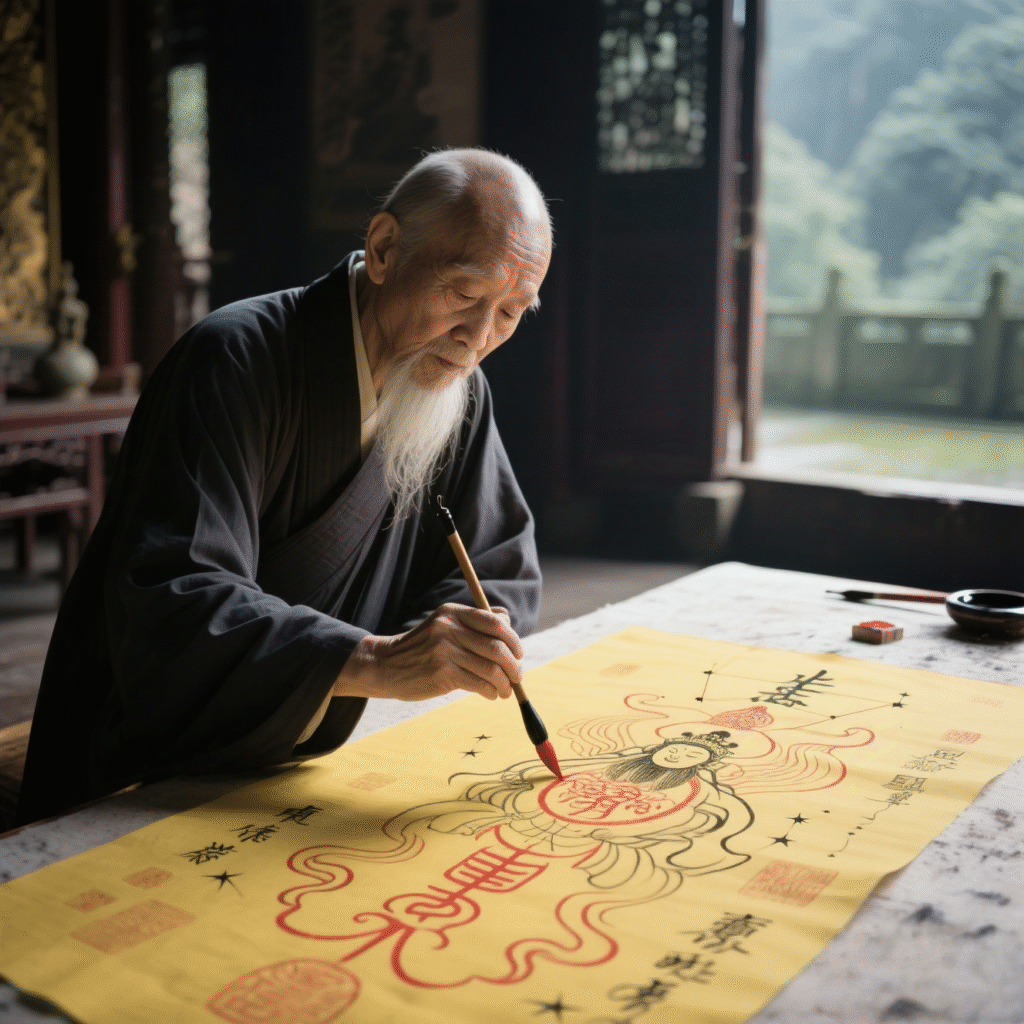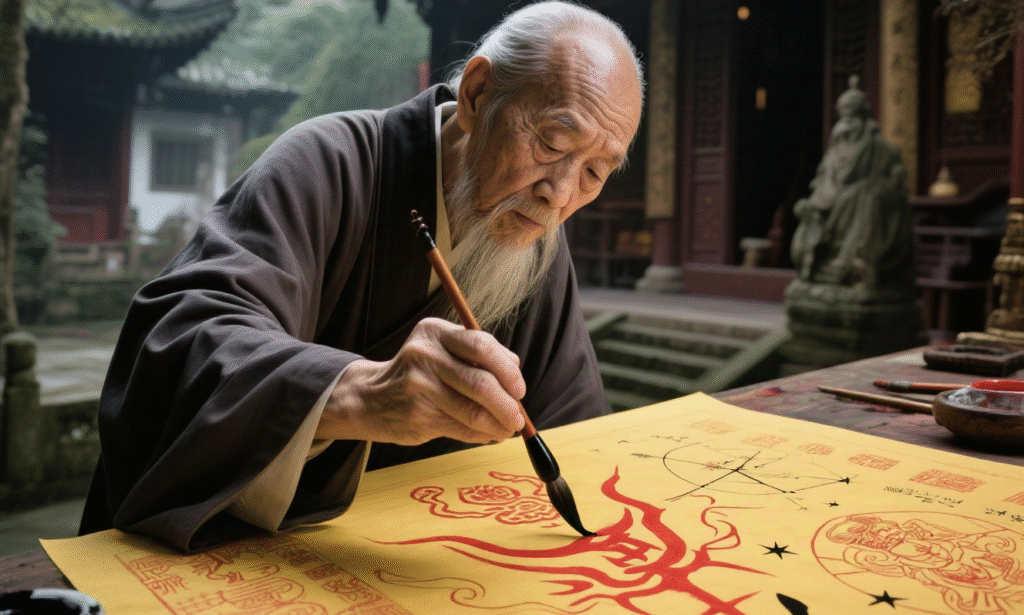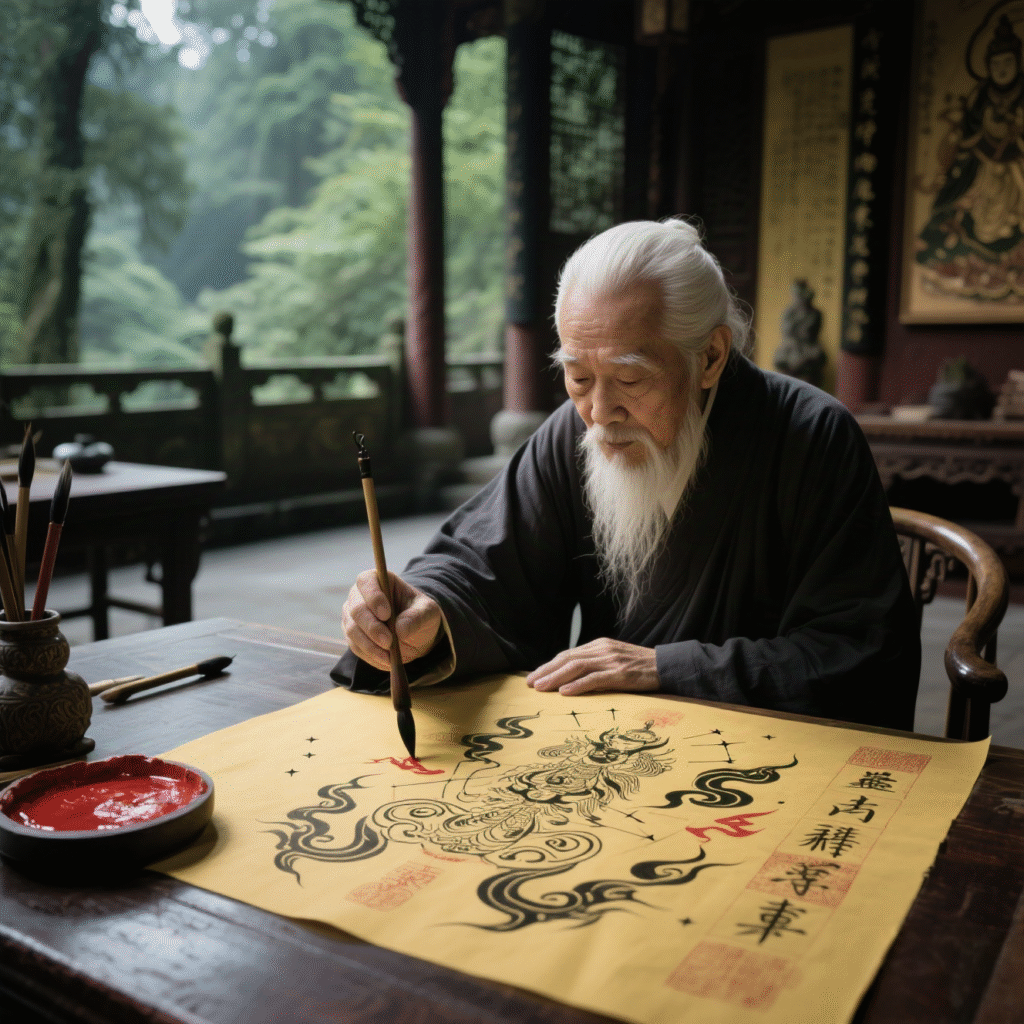Cosmic Codes on Vermilion and Yellow Paper:
Deciphering Daoist Talisman Culture

Deep in Qingcheng Mountain’s tranquil Daoist temple, an elder priest concentrates, drawing a talisman (Fúlù, 符箓). Brush in hand, dipped in cinnabar, he sweeps across special yellow paper—cloud-seal scripts, thunder patterns, star maps, deity images, or esoteric character combinations flow.
As ink and spirit unite, a Daoist talisman believed to commune with spirits, ward off evil, and grant protection is complete. Air fills with cinnabar’s mineral scent and pine-soot ink’s fragrance.
Daoist Talismans
Daoist talismans are unique religious and cultural art forms rooted in profound Chinese philosophy (especially Daoist cosmology and deity beliefs). They are not random scribbles but part of a transmitted “Register of Methods” (Fǎ Lù, 法箓) system—structured, symbolic. Every stroke and sign corresponds to specific deities, stars, or natural forces.
Drawing a talisman is sacred ritual: the priest purifies body/mind, focuses energy (Qì, 炁/气), achieving unity of spirit and form (Shén Xíng Hé Yī, 形神合一) to “fuse personal essence with all things’ essence.” This embodies Daoism’s core tenets: “Heaven-Man Resonance” (Tiān Rén Gǎn Yìng, 天人感应) and “Dao follows nature.”

Eastern Mystical Symbol Element

While primarily religious, Daoist talismans hold immense artistic and cultural value—their unique visual composition, rhythmic lines, and mystical heritage fascinate scholars. Their primal, potent aesthetics inspire modern cultural design ideas, becoming distinctive Eastern mystical symbols.
Understanding their cultural essence and appreciating them as religious art collectibles offers a window into traditional China’s profound, mystical dimension——revealing ancient awe and exploration of cosmic forces.